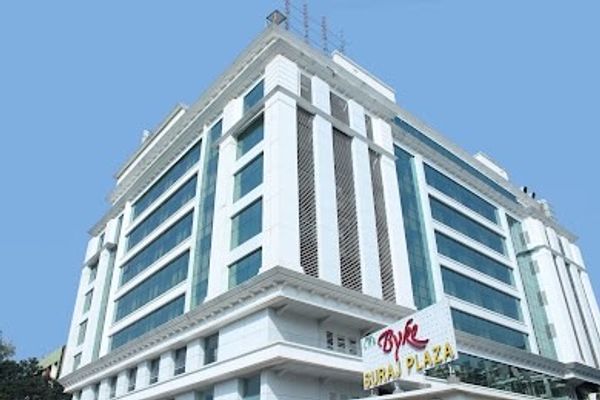Valley of Flowers Trek: The Ultimate Himalayan Floral Adventure
 Palakshi Meharwal
27 May, 2025
10 mins read
10
Palakshi Meharwal
27 May, 2025
10 mins read
10

Tucked away in the remote reaches of Uttarakhand's Chamoli district, the Valley of Flowers Trek is a sublime Himalayan journey that invites nature lovers, botanists, and adventure seekers alike. With its alpine meadows awash in vibrant hues during the monsoon months and its trail winding through misty forests and glacier-fed rivers, the Valley of Flowers stands as one of India’s most breathtaking UNESCO World Heritage Sites.
Overview of the Valley of Flowers
At an altitude of approximately 12,000 feet, the Valley of Flowers is part of the Nanda Devi Biosphere Reserve. It is celebrated not just for its aesthetic beauty but also for its rich biodiversity. Over 500 species of wildflowers bloom here, including rare varieties like the Blue Poppy (Meconopsis), Brahma Kamal (Saussurea obvallata), and Cobra Lily (Arisaema). The valley is also home to endangered fauna such as the Asiatic black bear, snow leopard, and musk deer—though sightings are rare.
What sets this trek apart is not only its scenic splendor but also its deep cultural and spiritual significance. The nearby Hemkund Sahib, a revered Sikh pilgrimage site, adds a spiritual dimension to the adventure.
Trek Itinerary and Route Details
The journey to the Valley of Flowers begins from Govindghat, a small hamlet accessible by road from Haridwar or Rishikesh. From there, trekkers proceed to Ghangaria, the base camp, after a 9–10 km hike along the Lakshman Ganga River. The following day involves a moderate ascent into the valley itself.
- Day 1: Haridwar to Govindghat (drive, ~10–12 hours)
- Day 2: Govindghat to Ghangaria (trek, ~10 km)
- Day 3: Ghangaria to Valley of Flowers and back (~12 km round trip)
- Day 4: Optional visit to Hemkund Sahib (~6 km steep ascent)
- Day 5: Return to Govindghat
- Day 6: Departure
This six-day itinerary offers a balanced experience of nature, exertion, and serenity. The trail, though well-defined, involves moderate difficulty and requires a fair level of physical fitness.
Best Time to Visit
The valley remains open to trekkers from June to early October, but July and August are considered the best months. During this period, monsoon rains catalyze the blooming of thousands of alpine flower species, turning the valley into a living canvas of color.
However, with the beauty comes the challenge of unpredictable weather. Rain showers are frequent, and trails can be slippery. Therefore, good-quality trekking shoes, waterproof gear, and a flexible itinerary are essential.
Ecological and Conservation Importance
The Valley of Flowers is not just a visual treat; it plays a crucial role in Himalayan ecology. It supports numerous endemic and medicinal plant species and acts as a breeding ground for pollinators like butterflies and bees. The area is protected under Indian and international conservation frameworks, including UNESCO World Heritage Site status and strict regulation by the Forest Department.
To ensure the fragile ecosystem is preserved, trekkers must adhere to the principles of Leave No Trace. Littering, picking flowers, or disturbing wildlife is strictly prohibited. The local forest authorities also limit the number of daily visitors to minimize human impact.
Floral Highlights and Biodiversity
The diversity in the valley is unparalleled. Among the hundreds of species found, some key highlights include:
- Himalayan Bellflower (Campanula latifolia) – often seen in shades of blue and violet.
- Primulas – bright pinks and purples lining the trail edges.
- Dactylorhiza hatagirea – a rare orchid with medicinal properties.
- Geraniums, Anemones, and Marigolds – blanket the meadows.
The flowering pattern changes every 10–15 days, so each visit can present an entirely different floral arrangement.
Cultural Significance
While the trek is widely celebrated for its botanical wonders, it also holds immense spiritual value. A short diversion from Ghangaria leads to Hemkund Sahib, located at 4,329 meters. According to Sikh lore, Guru Gobind Singh meditated here in a previous life. The crystal-clear glacial lake flanked by snow-capped peaks adds a mystical aura to the pilgrimage.
Hindus also revere the region, particularly for its connection with the Ramayana. Legend holds that Hanuman fetched the Sanjeevani herb from this very valley to revive Lakshman.
Preparation Tips for Trekkers
Although not the most physically demanding trek in the Himalayas, the Valley of Flowers trek requires preparation. Here are a few essentials:
- Fitness Regimen: Begin a walking or cardio routine at least a month in advance.
- Trekking Gear: Waterproof jackets, hiking boots, trekking poles, and a comfortable backpack.
- Permits: Entry permits are required and can be obtained in Govindghat or Ghangaria.
- Medical Kit: Carry altitude sickness medication, as well as essentials like ORS, band-aids, and antiseptics.
- Hydration: Carry reusable water bottles to reduce plastic usage and avoid dehydration.
Sustainable Tourism and Responsible Travel
With increasing footfall, responsible trekking is more important than ever. Many local tour operators are embracing eco-tourism practices such as zero-waste treks, solar-powered base camps, and community engagement programs. Opting for such services not only ensures a lower ecological footprint but also supports the local economy.
Engaging with local guides, trying Garhwali cuisine, and respecting local customs contribute to a more fulfilling and ethical travel experience.
Conclusion: Why This Trek Should Be on Your Bucket List
The Valley of Flowers Trek is more than just a scenic hike—it's an immersion into an untouched realm of Himalayan beauty, culture, and biodiversity. Every step through its floral corridors inspires awe and introspection. Whether you’re an avid trekker, a botany enthusiast, or someone seeking spiritual solace, this Himalayan gem offers a profound connection to nature in its purest form.
For those yearning for a transformative journey in the lap of the Himalayas, the Valley of Flowers stands as a radiant, soul-stirring choice.
Written By:
Palakshi Meharwal



Hotels at your convenience
Now choose your stay according to your preference. From finding a place for your dream destination or a mere weekend getaway to business accommodations or brief stay, we have got you covered. Explore hotels as per your mood.


